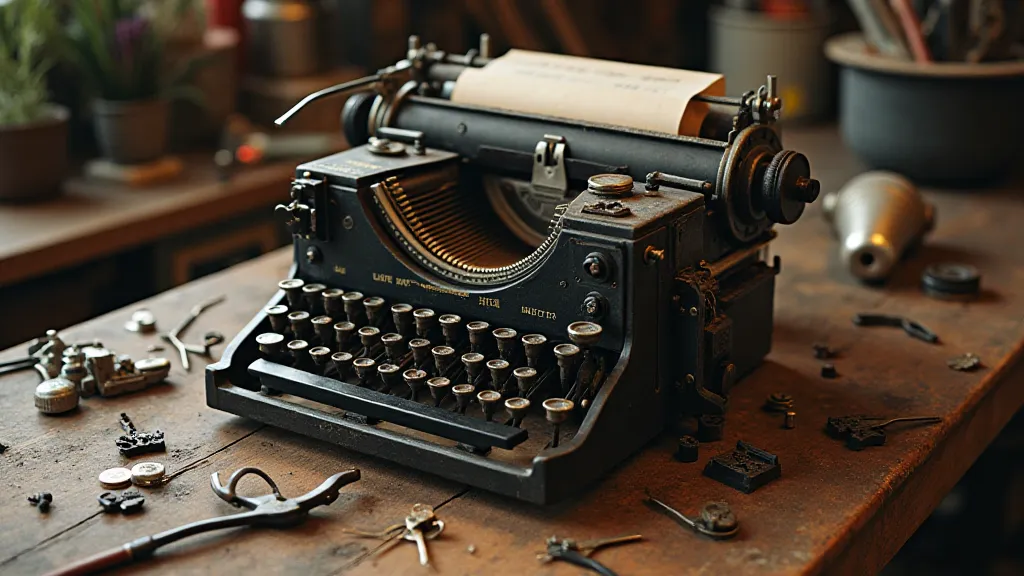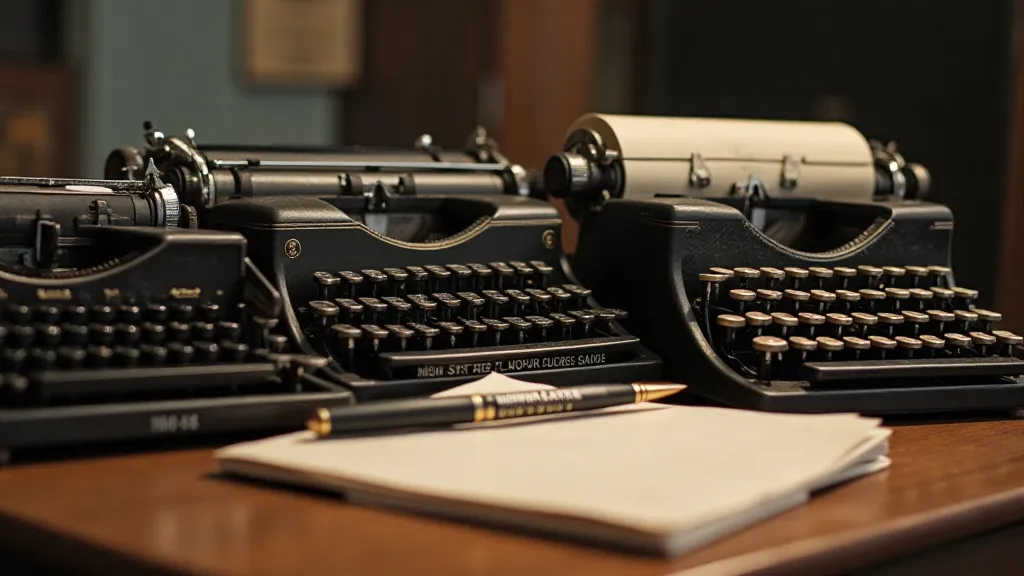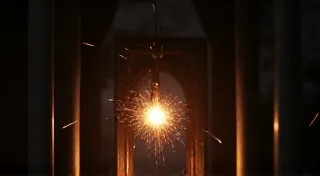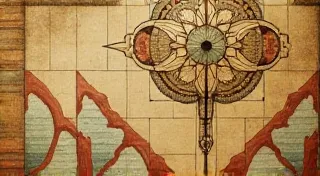The Silent Chorus: Finding Stories Within Damaged Typewriter Mechanisms
There’s a peculiar intimacy that develops when you hold a damaged antique typewriter. It’s more than just the cool weight of the metal, the satisfying click of a functional key – it's a feeling of connection to a past life, a ghost of voices long silenced. Each chipped paint fleck, each frozen key, whispers a fragment of a story. These aren’t just machines; they’re vessels, holding echoes of laughter, frustration, love letters, and countless other moments poured onto paper.
I remember the first typewriter I ever rescued. It was a Remington No. 8, a common model, but one that had clearly suffered a hard life. The paint was faded, the escapement was jammed, and several keys were stubbornly locked in place. It sat discarded in the dusty corner of an antique shop, overshadowed by more pristine, albeit less interesting, pieces. There was something about its forlorn state, its palpable sense of neglect, that drew me in. I saw not a broken machine, but a challenge – a promise of revealing a hidden narrative.

A History Etched in Metal
To appreciate the silent chorus of a damaged typewriter, a little historical context is essential. Think about the era of the typewriter’s heyday – the late 19th and early 20th centuries. It was a time of burgeoning industry, expanding literacy, and the rise of the modern office. The typewriter wasn’t just a writing tool; it was a symbol of progress, of efficiency, of a new era of communication. For writers, it was a gateway to publication, a tool to overcome the laborious process of handwriting. It empowered secretaries, journalists, and anyone who wanted to have their voice heard. These machines weren't cheap. They represented an investment, a tool with the power to change a person’s life, or at least, make their daily work less demanding. Knowing this, it’s easy to imagine the weight of responsibility—and the personal stakes—tied to each keystroke.
The early typewriters, like the Remington No. 8, were marvels of engineering. They were entirely mechanical, relying on intricate levers, springs, and escapements to function. Each part was meticulously crafted, often by hand, using techniques that are largely lost today. The quality of the materials, the precision of the assembly—it all speaks to a level of craftsmanship that's rarely seen in modern mass-produced goods. This legacy of precision and artistry is what makes restoring antique typewriters so rewarding, and so challenging. The subtleties of ribbon degradation, too, contribute to the overall picture of a typewriter's history; understanding the processes that lead to fading and brittleness can provide clues about its age and usage. For those interested in this aspect, a deeper dive into understanding ribbon degradation and preservation can be quite insightful.
The Language of Broken Parts
When a typewriter falls into disrepair, the physical damage isn’t just an aesthetic issue; it's a visual representation of a narrative. A jammed carriage might signify a story left unfinished, a creative block, or a life interrupted. Keys that stick could represent words unsaid, emotions suppressed, or burdens carried. A warped frame could symbolize a life that's been bent and broken. The beauty lies in recognizing these metaphors, in allowing the condition of the machine to inspire your own creative endeavors. Sometimes, the very act of dating an antique typewriter, noting the manufacturing details and identifying its production era, can shed light on the historical context surrounding its potential stories. For those interested in delving into the fascinating details of determining a typewriter's age, dating antique typewriters through manufacturing details provides a comprehensive guide.
I’m not suggesting that we must read a literal story from every broken part, but considering the possibility invites a deeper engagement with the object. Perhaps a rusty type bar suggests a character weathered by hardship, or a missing bell hammer represents a forgotten celebration. The possibilities are endless, limited only by your imagination. It's an exercise in empathy, in understanding that even seemingly inanimate objects can carry profound emotional weight.

Beyond Restoration: A Writer's Muse
The act of restoring a typewriter isn’t merely about repairing a machine; it’s about breathing new life into a piece of history. It's a painstaking process that requires patience, skill, and a genuine appreciation for the machine's legacy. There’s the careful cleaning of decades of grime, the meticulous lubrication of frozen mechanisms, the delicate replacement of worn parts. Each step is a small victory, a testament to the enduring power of human ingenuity.
But even more than the mechanical repair, the *feeling* of restoring a typewriter is what's truly remarkable. The sense of connection to the past, the feeling of bringing a silent voice back to life—it’s an experience that’s difficult to articulate. And for a writer, it's an unparalleled source of inspiration. Imagine the stories that could be written on a resurrected typewriter, imbued with the echoes of its past, informed by the challenges it has overcome.
I find that the process of restoration itself often unlocks new creative avenues. The problem-solving required to diagnose and repair a jammed mechanism encourages a different kind of thinking, a more analytical approach to storytelling. The physicality of the work—the feeling of metal in my hands, the satisfying click of a restored key—grounds me, reminding me of the tangible reality that underlies all narratives. It’s a process not dissimilar to the delicate fusion of traditional writing techniques with the artistry of typewriter art, where the machine itself becomes a collaborative partner in the creative process. The art of combining these two worlds, finding new ways to express oneself, resonates deeply with the spirit of innovation that defined the era of the typewriter.
Collecting with a Perspective
For those drawn to collecting antique typewriters, it's beneficial to look beyond pristine examples. While the flawlessly restored machine has its appeal, the “patina of time,” the visible signs of wear and use, tell a richer story. A typewriter with a chipped paint job might have been a loyal companion to a struggling author, a silent witness to their triumphs and failures. A machine with a faded ribbon might have been used to draft passionate love letters, sealed with hopes and dreams. The stories held within the machine are often more compelling than the machine's flawless appearance. Considering the history of the object, the potential narratives it has witnessed, adds another layer of intrigue and appreciation.
Consider the provenance of the typewriter. Knowing its history—where it came from, who used it, what stories it might have witnessed—adds another layer of depth and meaning to the object. It transforms it from a mere machine into a portal to a different time, a tangible link to the past. It’s fascinating to think about the potential residual creativity left behind on a typewriter—the echo of past writers still lingering within its mechanisms. The influence of these past users, the subtle imprint of their writing styles, the emotional weight of their stories—all contribute to the typewriter’s unique character. Exploring the residual creativity of past writers can unveil fascinating insights into this phenomenon.

The Enduring Legacy
Antique typewriters are more than just relics of a bygone era. They are vessels of memory, embodiments of creativity, and testaments to the enduring power of human ingenuity. By appreciating their beauty, understanding their history, and embracing the stories they hold, we can unlock a deeper connection to the past and inspire our own creative endeavors. Listen to the silent chorus – it has much to tell. They stand as a testament to a time when the simple act of writing carried a significant weight, when each keystroke represented a tangible commitment to communication and creation. They’re a bridge to the past, a portal to a different way of life, and a constant reminder of the enduring power of human connection through the written word.
Ultimately, the appreciation of antique typewriters extends beyond mere functionality; it's about recognizing their cultural significance, their historical context, and the profound human stories they embody. It's a journey of discovery, a celebration of craftsmanship, and an invitation to connect with the echoes of the past. Through their weathered keys and faded ribbons, these machines whisper tales of ambition, struggle, love, and loss – a silent chorus waiting to be heard.





